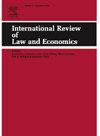Motivations for the restructuring of China’s patent court system
Abstract
Is the evolution of China’s patent litigation courts from a scattered expansion to a shrinking concentration spontaneous or is it a rational construction? Understanding the motivation for the adjustment of China’s patent court system is important for judging whether the system change is appropriate and for choosing the optimal patent litigation system. After addressing the endogeneity between the number of patents and the adjustment of the patent court system using patent incentives as an instrumental variable for the number of patents, responding to the need to protect the growing number of patents appears to be the underlying reason for the expansion of the number of patent courts in China until 2014. The number of patents directly contributed to the growth of the number of patent courts as patent cases proliferated. The downsizing of the patent court after 2014 was, in contrast, a targeted reform initiative in response to the decline in the quality of cases heard due to the increase in the number of patent courts. The adjustment of China’s patent court system thus appears to be the result of rational constructions in response to a changing reality.

 求助内容:
求助内容: 应助结果提醒方式:
应助结果提醒方式:


